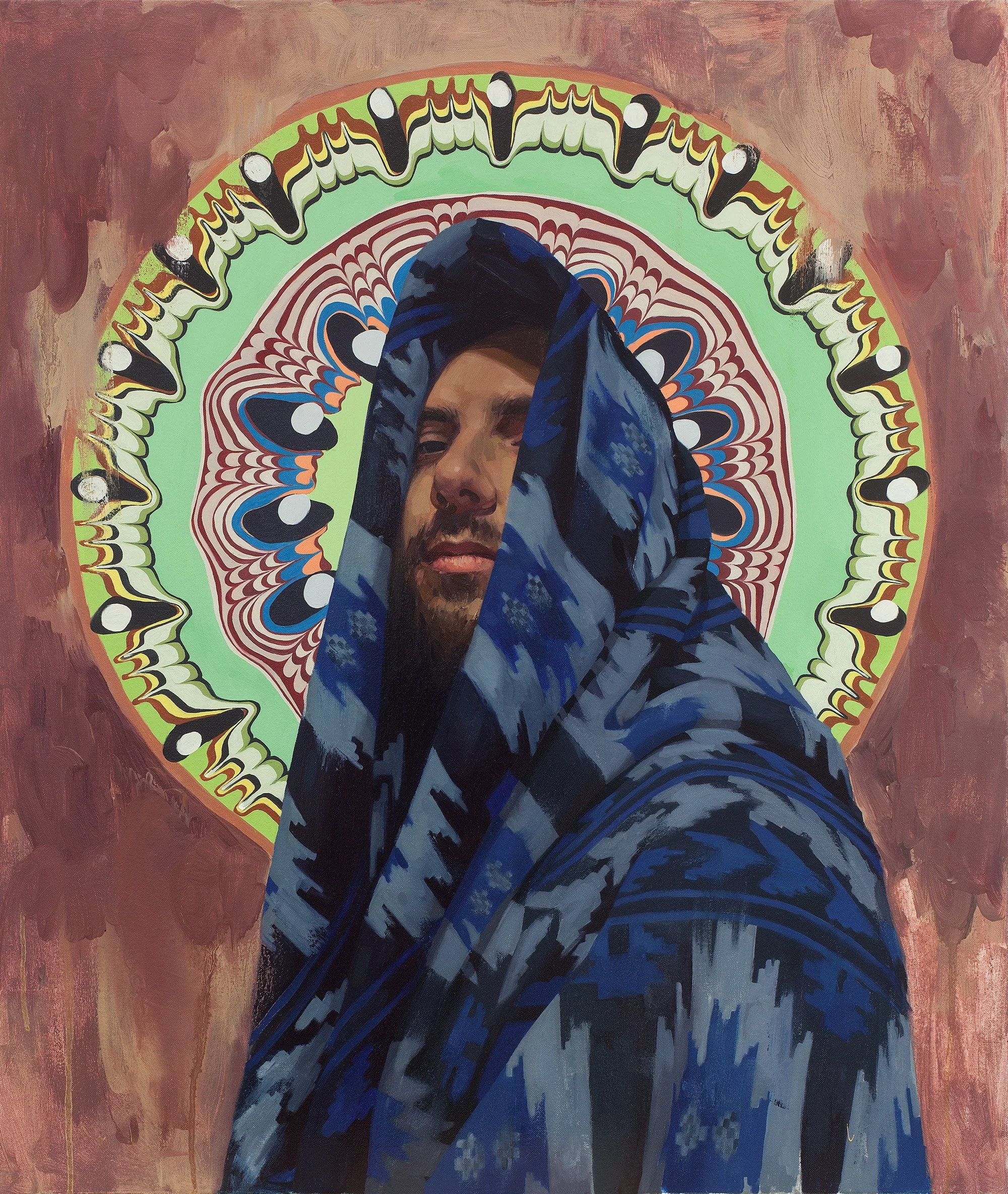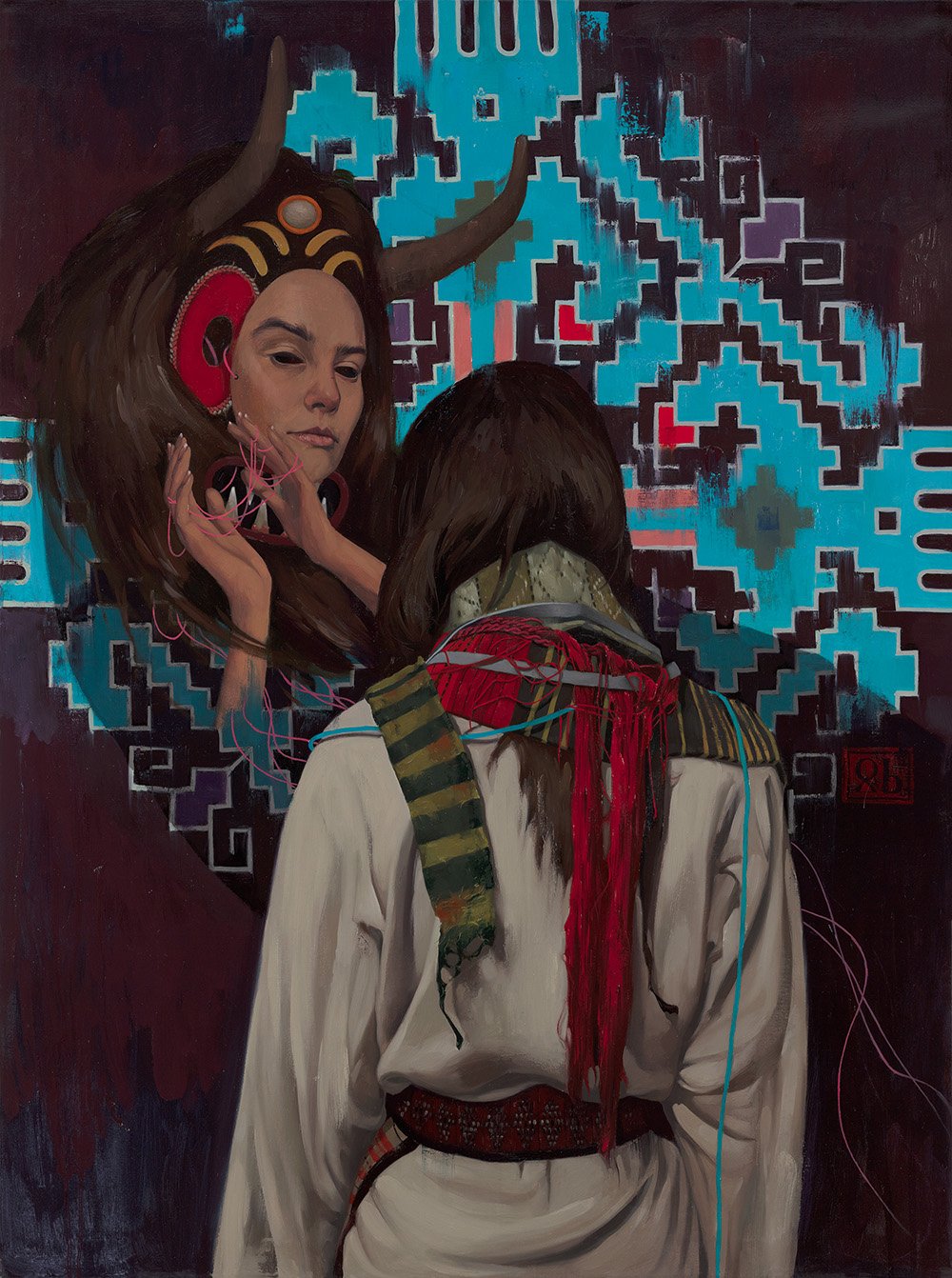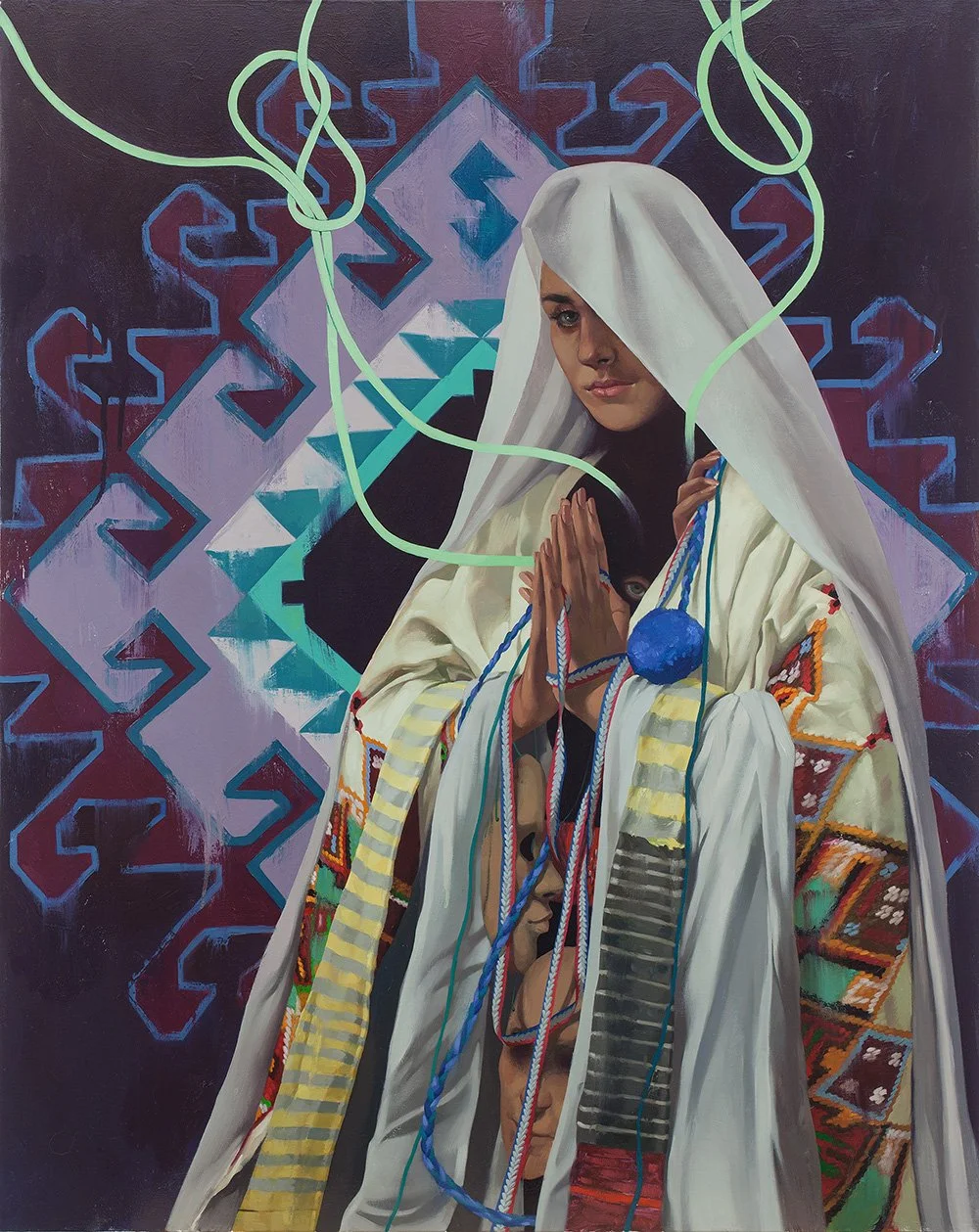Back to the roots:
An interview with Simona Ruscheva

I know that nothing is original, as Cate Blanchett very clearly stated in the arthouse film Manifesto. Yet still, often while browsing art on social media, I cannot shake the feeling that the pursuit of likes and engagement can lead artists astray from genuine, unfiltered artistic expression. Every once in a while, however, I come across a contemporary artist whose work gives me a literal jaw drop or even makes my eyes water.
Simona Ruscheva’s artwork whispers to parts of my identity and sense of self on a very deeply emotional level, partially because of our shared nationality. Her work binds together the microcosm of native Bulgarian culture and the vast macrocosm of the eternal and intangible that surrounds our material and transient human world. I recognise in her work a longing to reconnect to an origin that explores but also transcends cultural heritage.
Heavy in layers of symbolism and implicit meaning, it conveys messages that viewers from different backgrounds would likely decode in very different ways. It may not be instantly evident to someone who is not familiar with Bulgarian culture and folklore, that the backgrounds in Eclipse and Puh are not simply a trippy decoration, but direct references to the characteristic glazing on traditional Bulgarian ceramics. The cross-stitching alike, wouldn’t necessarily speak volumes to someone who doesn’t have an insight into the age-old narratives encrypted within each shape and pigment. Yet, I can imagine the curiosity that all of those secrets must evoke in viewers from any culture and any nationality. In this sense, I see Simona’s art as a bridge between cultures and an elegant invitation for the world to get to know the mysteries of Bulgarian culture and bring it out of the margin of the other and into a light of understanding.
Eclipse
Puh
My favourite type of art is that which evokes profound complex feelings and beckons me to abandon every other thought in my mind so as to submerge deep into reflections on what is before me. Looking at Simona’s work makes me feel as though I have been snatched from my physical reality by a giant eagle and dropped on some other plane. It stirs up emotions in me that I cannot instantly place or rationalise. It makes me feel like I am solving a very intricate puzzle of internal exploration/ creation. It presents before me a mirror that reflects the reasons for which I decided to devote the final project of my Bachelor’s degree to a visual exploration of contemporary Bulgarian national identity.
I recognise the element of exploring national identity as a means of creating a sense of belonging when surrounded by a culture to which you don’t fully belong, but which undeniably alters you. And so, you don’t fully belong home either, once you go back there. Simona’s art makes me face a heavy personal truth - that one part of myself pulls towards the homeland with nostalgia, and the other one towards the exciting promises of my new life. I am in a permanent state of being an in-betweener, never fully here or there.
In a globalised society, this is a very popular feeling. And perhaps I find comfort in the thought that many of us cannot clearly define where or what home is. It becomes a concept that transcends geography, culture, or time and has the potential to disintegrate boundaries between people. It is something we carry within ourselves. It is the feeling I get when basking my eyes in Simona’s colourful paintings.
Spirited Away
Tonka
We had the pleasure of asking Simona Ruscheva a few questions and gaining a bit of an insight into her work and her life.
Tell us a bit about your background. Where are you originally from? When did you move to the UK? Did you go to art school and if so where? If not- what did you study? Are you a full-time artist or do you have another job as well?
I am originally from Bulgaria, where I also went to art school. Moving to the UK happened quite spontaneously right after I graduated and I have been living here since. I have a part-time design job that I currently do from home.
How would you describe your art style?
The best way to describe my style is new contemporary or new figurative, which refers to the visual language and aesthetics that I use in my works. Style, like everything else, is constantly evolving and I love experimenting, but figurative is definitely something that I will be doing for a while.
When did you 'discover' it?
I think the style I currently have started forming 3-4 years ago, but even looking at my works from 2 years ago and compare to my current works they feel different, much different energy. My older works feel darker and heavier, while the new ones are very fiery. I can see the evolution path and the way the works are taking me to.
How did you decide to place Bulgarian folklore as a central theme in your work? What thought process, life experiences and feelings led you to this?
There have been a few synchronicities at the beginning that led me to this. A few years ago I had close to zero interest in Bulgarian folklore, however, I have always had an interest in ancient history and symbolism. I was reading a book about Sumer and there was a certain symbol from a glyph that soon after I saw in a sleeve embroidery from a traditional Bulgarian dress.
That was one of those moments when the pieces just fit together and you see the bigger picture. I began to be very interested in the embroideries, rugs and ceramics and what they represent, the symbols and their meaning. I started discovering not only the stories but also the beauty in my own culture.
So I transformed my visual language almost entirely to fit in with the new re-discovered interest, while at the same time keeping some of my main ideas.
How is your international audience responding to the themes in your art that refer to Bulgarian mythology and certain cultural peculiarities?
They find it rather interesting, want to learn more and it usually starts a discussion about similarities between different cultures, heritage preserving, etc. My works are very specific with the themes, but there is always a more universal element and symbolism that I delve into. For example in my most recent “Fire series” I explore the subject of life cycle, birth, death and re-birth while using traditional elements from Bulgarian folklore.
Galactic
Layers
How did your artistic journey begin? When did you discover your fascination with art and at what point did you decide to devote yourself to it?
When I was younger I used to have two passions, art and math. A few months after I started in mathematical high school I decided it was definitely not my way and I started private drawing lessons. Painting came much later, a few months before I applied to art school, which was when I actually decided I want to do painting.
Tell us about a time of struggle along your artistic journey that you've had to overcome.
It was actually very recently that this happened. I had a break from painting, while I was becoming a mother. Starting to paint again after that was a huge struggle, my brushes and paints felt alien, my ideas were falling short, I was learning how to be a mother, but I was also learning how to paint while being a mother. It was all about balance as I am a mother first, but I have always been an artist.
The amalgamation of perfectionism, self-criticism and self-doubt are the nemesis of most artists, do you struggle with those as well? How do you fight them off?
There are times when self-criticism and self-doubt strike, but I have learnt to quickly brush them off as they are the biggest time eaters if you don’t count social media. The best way to fight them off is to keep working, even if what comes may not be the best work, it may even fall into the “how did I even do that” category, but it does not matter as it is only a passing phase.
Perfectionism on the other hand is not something I struggle with a lot, if at all. I am always looking for ways to improve what I do, not just painting. It is not a drive to be perfect, but to learn, move forward and evolve.
You’ve recently received the gift of having a child. How has motherhood influenced your workflow?
This was one of the best moments in my life. It has changed my workflow a lot. While time is quite limited I’ve learned how best to manage it and focus much easier than before. I am now much more efficient and when I start doing something I try not to distract myself with any other activities. It sounds very simple, but it is one of the best changes I have done.
Which one of your works is closest to your heart or has the highest sentimental value to you and why?
I think that would be my work Eclipse as it is my first self-portrait and I poured a lot of thoughts and explorations about myself, that I could only express and experience through the painting process.
I always consider self-portraits to be profoundly hard and at the same time rewarding, it is as if you are creating a map of yourself, but you also need the legend to fully understand it. All my works have many layers of symbolism, this one I can say has a few extra.
What is coming next? What are you currently working on? Any exhibitions we should look forward to?
Next, I have a few exhibitions that are coming before the end of the year. The biggest one will be a mini solo show in the USA in November.
I am also working on my new “Fire series” as I love working in series and want to develop the ideas, so there will be more on that subject coming soon.
What advice would you give to someone who is just beginning their artistic career or is considering doing so?
You have to be all in and you have to trust in yourself. And also you have to do the work and keep doing it, nothing happens out of thin air. If you want something to happen you need to take action, you need to make it happen. And again, trust in your higher self.
Thank you for taking the time to answer our questions, Simona!








